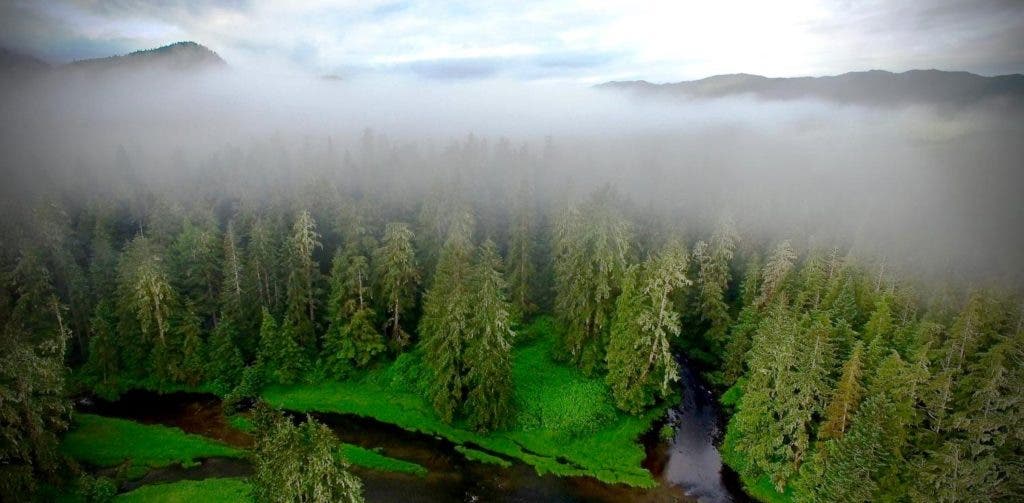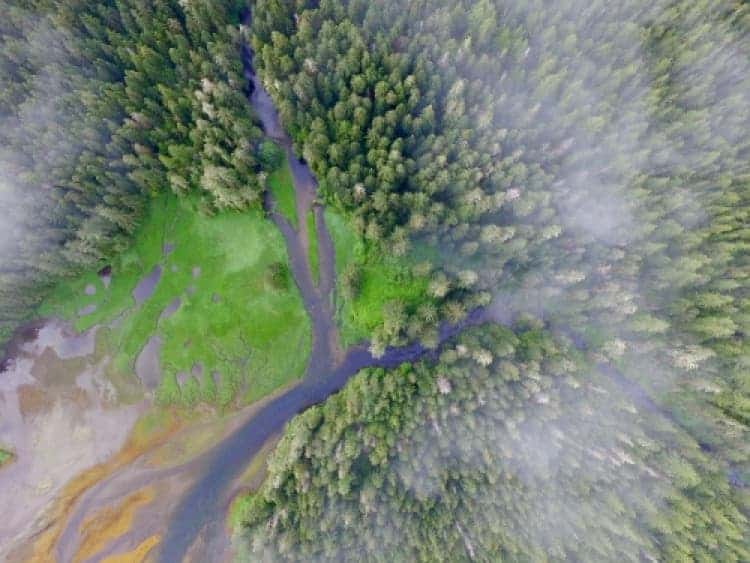We’ve often covered the effect human life is having on the environment pretty extensively on ZME Science (see here, here, and here for a few highlights) and for the most part, it’s been pretty grim.

Image credits Will McInnes / Hakai Institute.
So what gives? Are we doomed to destroy the world (or worlds) around us over and over again in our thirst for resources, or is there any reverse to the coin? University of Waterloo Faculty of Environment Professor Andrew Trant says there is. He led a study in partnership with the University of Victoria and the Hakai Institute which found that the almost 13,000 thousand years of repeated human habitation in British Columbia by the First Nations has actually enhanced temperate rain forest productivity.
The research put together remote-sensed, ecological and archaeological data from coastal sites that have been settled by the First Nations for thousands of years. The trees growing at these sites were found to be taller, wider, and overall in better health than those in the surrounding forest.
And it can all be traced to shell middens and fire.
“It’s incredible that in a time when so much research is showing us the negative legacies people leave behind, here is the opposite story,” said Trant, a professor in Waterloo’s School of Environment, Resources and Sustainability.
“These forests are thriving from the relationship with coastal First Nations. For more than 13,000 years —500 generations—people have been transforming this landscape. So this area that at first glance seems pristine and wild is actually highly modified and enhanced as a result of human behaviour.“
Intertidal shellfish gathering has really picked up in the area over the last 6,000 years, leading to an accumulation of deep shell middens in the area. The discarded middens covered thousands of square meters of forest ground, in some cases being deposited in piles more than five meters deep. In what’s probably the most fortunate turnout of littering that I know of, depositing the remains inland brought significant quantities of marine-derived nutrients to the soil. As the shells slowly deteriorated, they leached calcium into the soil, promoting tree growth.

The team also found evidence that the use of fire also helped make the forests we see today. Along with the disposal of shells, ash introduced important nutrients to the forest’s soil, increased its pH levels, and improved soil drainage.
The study examined 15 former habitation sites in the Hakai Lúxvbálís Conservancy on Calvert and Hecate Islands using remote-sensed, ecological and archaeological methods to compare forest productivity with a focus on western red cedar. It is the first work to find evidence of long-term use of intertidal resources increasing a forest system’s productivity.
Trant believes that similar findings will occur at archaeological sites along many global coastlines.
“These results alter the way we think about time and environmental impact,” he said. “Future research will involve studying more of these human-modified landscapes to understand the extent of these unexpected changes.”
The full paper, titled “Intertidal resource use over millennia enhances forest productivity” has been published in the journal Nature Communications.






